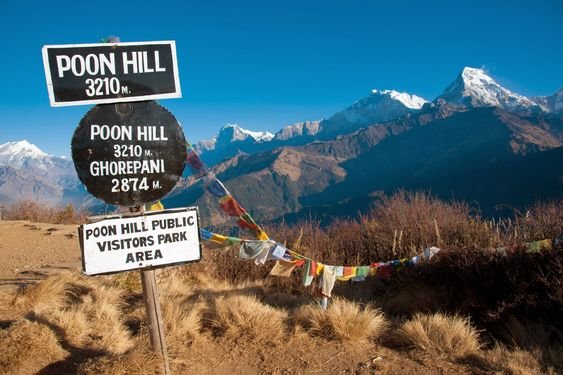The Kanchenjunga Trek is an awe-inspiring adventure that takes trekkers to the pristine and remote region of eastern Nepal, offering a remarkable journey through the world’s third highest peak, Mount Kanchenjunga (8,586 meters). This trek is a paradise for nature enthusiasts, providing breathtaking landscapes, rich biodiversity, and an opportunity to witness the unique culture of the local communities.
Stretching over a distance of approximately 177 kilometers, the Kanchenjunga Trek is renowned for its challenging terrains, remote trails, and untouched wilderness. The trek typically begins with a scenic flight from Kathmandu to Taplejung, a small town in the Taplejung district, which serves as the gateway to this Himalayan wonderland.
The journey starts with a gentle ascent through terraced fields, dense forests, and picturesque villages, allowing trekkers to immerse themselves in the rich local culture. The region is home to a diverse array of ethnic communities, including the Sherpas, Limbus, and Rai people, who warmly welcome trekkers and provide insights into their traditional way of life.
As trekkers continue their ascent, the trail leads them through breathtaking landscapes, including lush rhododendron and bamboo forests, cascading waterfalls, and high alpine meadows. The trek also offers mesmerizing views of the surrounding peaks, such as Mount Jannu, Kabru, and Rathong.
One of the highlights of the Kanchenjunga Trek is the opportunity to explore the Kanchenjunga Conservation Area, a protected region established to preserve the unique biodiversity of the area. This conservation area is home to numerous rare and endangered species, including the elusive snow leopard, red panda, and musk deer. Trekkers may also encounter various species of birds, making it a paradise for birdwatchers.
The trek presents trekkers with the chance to visit remote villages, such as Ghunsa, Sele Le, and Pangpema, where they can experience the authentic lifestyle of the local communities. These villages offer a glimpse into the traditional practices, religious customs, and warm hospitality of the people living in this isolated region. Trekkers can savor the local cuisine, interact with the villagers, and even participate in cultural celebrations if their visit coincides with any festivals.
One of the major highlights of the Kanchenjunga Trek is reaching the Pangpema Base Camp, which offers a jaw-dropping close-up view of the majestic Kanchenjunga peak. The towering snow-capped mountains, immense glaciers, and the tranquil Oktang Lake create a surreal ambiance, leaving trekkers in awe of the natural wonders surrounding them.
The Kanchenjunga Trek is considered a strenuous and demanding trek, requiring excellent physical fitness, trekking experience, and proper acclimatization. Trekkers must be prepared for long days of hiking, challenging terrains, and unpredictable weather conditions. Hiring an experienced guide is highly recommended to navigate the trails and ensure a safe and memorable journey.
In conclusion, the Kanchenjunga Trek is an unforgettable expedition for trekkers seeking an off-the-beaten-path adventure in the Himalayas. The pristine landscapes, rich biodiversity, and cultural encounters make it a truly remarkable experience. This trek not only offers a chance to witness the grandeur of Mount Kanchenjunga but also allows trekkers to connect with the natural beauty and cultural heritage of the region. The Kanchenjunga Trek is a journey of a lifetime, promising unforgettable memories and a deeper appreciation for the wonders of nature.
Trekking in Kanchanjanga region
Group size of the Trek
Minimum one person
Maximum 12 person
Trek features :
1. Best view from
2. spectacular mountain views of ….. ranges
3. Rhododendron flowers forest, many types of orchids
4. cultural & practices.
Grade : Hard / streneous
Accommodation : Tea House/ Tented camp
Food: Continental
Equipment List
The requirement of equipment is diffrent for each trek. these are common requirment of personnel things for most of our treks. Please feel free to ask for advice we will provide you the best suggestion.
Clothing and Equipment Check List
- Pair of T-shirts and half pants
- Fleece jacket and warm Trousers
- Raincoats & water proof pants
- Down jacket
- Thermal underwear
- Windproof jacket
- Fleece/wool warm hat
- Baseball hat or sun hat
- Snow & sun glasses
- Fleece gloves
- Socks – 3/4 pairs
- Socks- woolen
- Trekking shoes
- Ligh sport shoes
- Small rucksack for daypack
- Waterbottle (metal )
- Kit Bag medium size
- Trekking poles (optional)
- Sleeping bag down ( -5-10 degree)
- Flash light & batteries
Personal things
- Small kit bag (valuable things can put inside , pocket knife )
- Sun Cream & lip care cream
- Moist towels for personal hygiene









